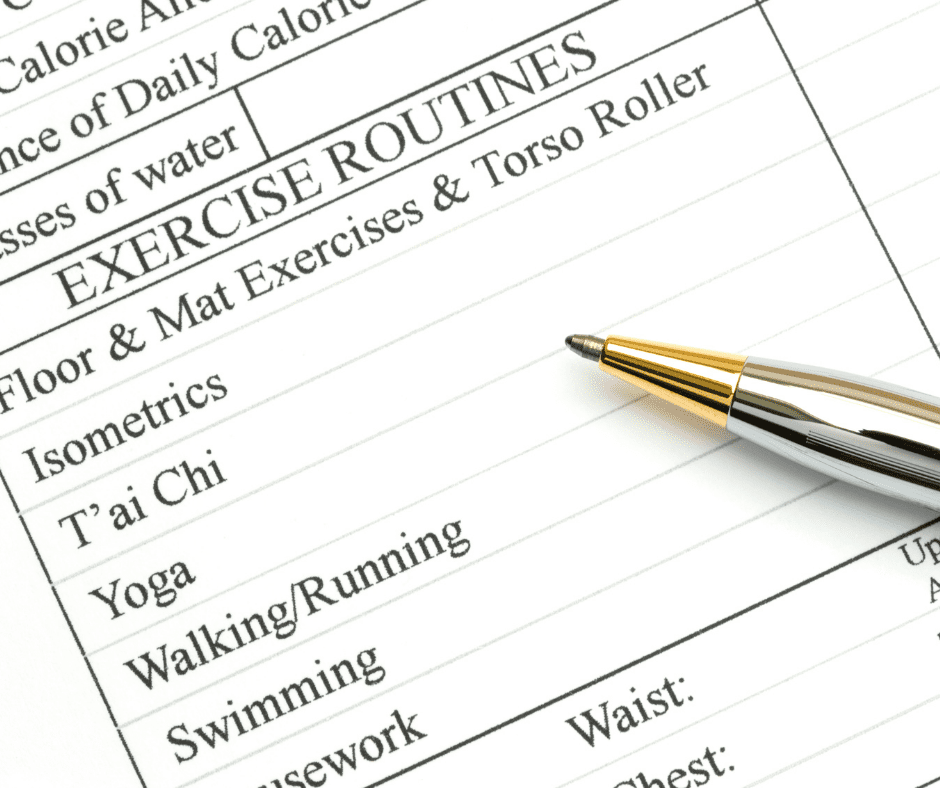People have varied views regarding exercise and its impact on your weight loss and overall health. Most know they should incorporate exercise, but have difficulty getting motivated to start or keep going.
In fact, did you know that only one in five American meet the Physical Activity Guidelines?
Just for good health, you need about 150 minutes of moderate exercise weekly, or 75 minutes of vigorous exercise weekly. In addition, you need 2 days of strength training per week. Unfortunately, modern society has been able to eliminate most physical activity out of daily life.
Physical activity, just like food and water, is a requirement for optimal health. And yet, many people have made it a choice NOT to be physically active. This lack of exercise and sedentary lifestyle is a primary and actual cause of many chronic diseases.
I mentioned that you need about 150 minutes of moderate exercise each week. So, what is considered Moderate Intensity exercise? Think of it as a medium or moderate amount of effort. It is any cardio or aerobic activity increases your heart rate. When this activity is done at moderate intensity, there is an increase in your heart rate and breathing rate. You may sweat, but you are still able to carry on a conversation. You can talk, but you can’t sing. You are exercising but you are not huffing and puffing. When you take your pulse, it will be 50 percent to 70 percent of maximum heart rate. (Your maximum heart rate is measured by taking 220 and subtracting your age).
Here are some great examples of moderate-intensity aerobic activities:
- brisk walking
- water aerobics
- dancing (ballroom or social)
- gardening
- tennis (doubles)
- biking slower than 10 miles per hour
I also mentioned a recommendation of 75 minutes of high intensity exercise each week. So, what is considered High Intensity Exercise? This type of exercise is done with a large amount of effort. Your heart rate will be substantially higher along with rapid breathing. You can only speak a few words at a time. You can’t speak easily in full sentences. When you check your pulse, it will be 70 percent to 85 percent of your maximum heart rate. Remember, your maximum heart rate is 220 – your age.
As I said earlier, in addition to either moderate or intense cardio activity, you also need 2-3 days of strength training. This helps to maintain your lean body mass (your muscle) which drives your metabolism and makes it easier for you to lose weight and keep it off for weight maintenance.
Remember to focus on different muscle groups each time – upper body, lower body, core, etc. You don’t always need fancy expensive equipment or even a gym to do these exercises. You can often use your own body weight or even simple resistance bands.
You know that exercising is great for good health. But what about for weight loss? Over the years, you have likely heard that if you want to lose weight, you better start exercising. But science tells us something a bit different.
With exercise alone – weight loss is just 2-3 percent loss over 6 months. That’s about 3-5 pounds weight loss in a 170-pound individual.
Walking 10,000 steps per day it is even less, 1-2 percent weight loss over 6 months.
But if you combine a good nutritional plan with exercising, you can get an 8-11 percent weight loss over 6 months. That is 14-19 pounds for a 170-pound individual.
Thus, nutrition plays a much bigger role in weight loss. And exercise plays a big role in maintaining the weight loss. In fact, many people need 250-350 minutes a week of exercise to maintain weight loss.
So how do you get motivated to exercise? Getting started is the hardest part, but once you get going, it gets a bit easier. Here are some tips:
- Put your workout clothes on. It readies your mind for exercising.
- Remember, exercising is cumulative – you don’t have to do it at once. 20 minutes in the morning and 20 minutes in the evening is fine to do.
- Schedule it on a calendar, like you would if you had a meeting. And be specific as to which type of exercise you will do and for how long.
- Keep variety – find different routines.
- Set weekly goals.
- Ask friends or neighbors to join you.
- Use trackers to track your progress. Many people find it motivating to look at data and numbers.
- And last, but not least, savor that great feeling of achievement after a workout. Maybe even take a few minutes to write it down and how it made you feel.
If you need help, my team and I are here for you. We are excited to help you establish an eating and fitness plan that works with your lifestyle.





